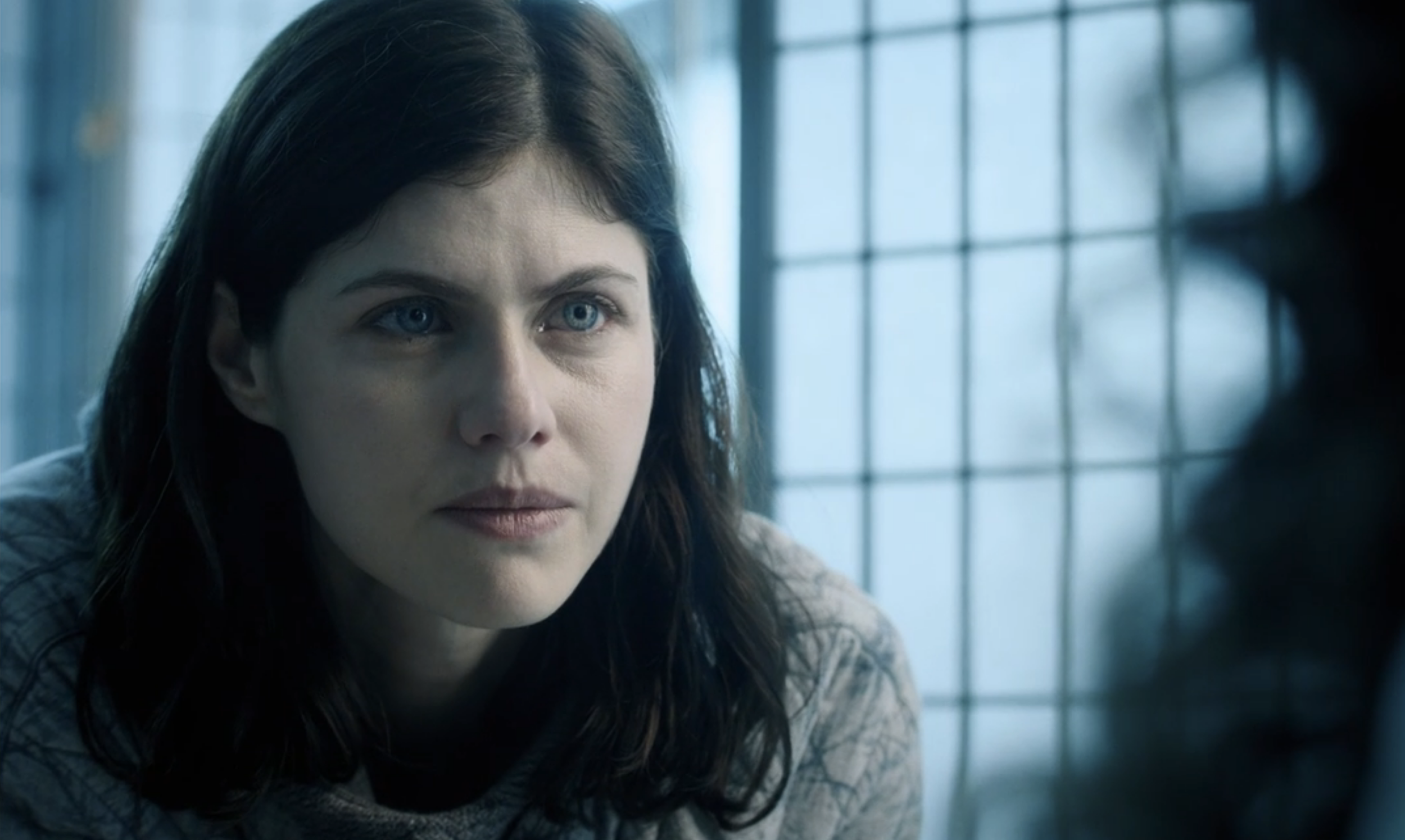MAYFAIR WITCHES tries to make sense of Anne Rice's epic family drama
Created by Michelle Ashford and Esta Spalding
1.01 “The Witching Hour”
Written by Michelle Ashford and Esta Spalding
Directed by Michael Uppendahl
Starring Alexandra Daddario, Tongayi Chirisa, Jack Huston, Harry Hamlin
New episodes available on AMC & AMC+ on Sundays
by Sam Morris, Staff Writer
So much for the Anne Rice-Verse… is what I was prepared to write based on early reviews of the premiere episode of Mayfair Witches. However, I was pleasantly surprised at how much I enjoyed “The Witching Hour” and impressed with just how many elements of Rice’s novel had to be adapted in order for this premiere to not be a complete trainwreck.
I read The Witching Hour last October for Monkey off My Backlog’s Spooktober episode on Anne Rice (which features TVJawn’s own Emily, who came on to talk about the first AMC Rice-Verse show Interview with the Vampire). I enjoyed the novel, but Rice structures the story in such an obtuse manner that Michelle Ashford and Esta Spalding had their work cut out for them. Rice has no qualms about forcing the reader to make it through seven hundred or so pages before revealing exactly what has been going on with the Mayfair family. Ashford and Spalding had no such freedom. Regardless of how the rest of the season/series works out, they are to be applauded for making an hour of television from Rice’s novel that makes some semblance of sense.
Just who is “The Witching Hour” about? Considering the casting of Alexandra Daddario as Dr. Rowan Fielding, the viewer might believe that she is the protagonist. We do spend a slight majority of time with her, but there are a lot of other characters to establish in this first episode. To make matters more difficult, these characters live in different time periods. The Witching Hour takes place over several hundred years, though Ashford and Spalding keep us within the bounds of a single century in this episode. They do, however, bring Rowan from her original late 80s time period to today, which involves shifting other time periods as well. Again, Ashford and Spalding are to be commended for the choices that they’ve made in this regard.
We spend time with three other characters, all of whom are essential: Ciprien Grieve (Tongayi Chirisa), Cortland Mayfair (Harry Hamlin), and Lasher (Jack Huston). The story of the Mayfair witches is about these characters just as much as it is about Rowan. For a Mayfair first-timer, Grieve is the most mysterious of the four main characters. For readers of the novel, he is recognizable as an adaptation of Aaron Lightner, a member of the Talamasca (a group dedicated to investigating the supernatural). Kudos to Ashford and Spalding for updating this character, who is originally a stuffy old white dude. Cortland Mayfair is the witch version of Lestat—basically. He is Rice’s most beloved witch character; just about all Mayfair family drama leads back to Cortland somehow. In other words, Hamlin is the perfect casting choice.
Lasher is a demon, as he tells Deidre late in the episode. Readers might be a little bothered here, as Lasher does not speak for the majority of the novel. Again, though, the exposition that he provides is necessary for viewers to have some reason to want to come back in future weeks. Also, I can’t complain that the connection between Rowan’s carnal appetites and the demon is made clearer earlier. Another qualm that readers might have is how Ashford and Spalding highlight Rowan’s “gift.” In Rice’s novel, she highlights the healing side of Rowan’s gift, gradually revealing its darker side. After a glimpse of her healing power, we see Rowan’s dark side on full display during her interaction with a sleazy CEO.
Again, there is a lot of ground to cover in this first episode. In addition to the four main characters and the beginnings of their storylines, “The Witching Hour” also has to service Deidre Mayfair—first as a wild child, and then as a drugged-up adult (Annabeth Gish). We are also introduced to Carlotta Mayfair (Beth Grant), who is responsible for the aforementioned drugging, as well as Elena Fielding (Erica Gimpel), a Mayfair family relation who takes Deidre’s baby (Rowan!) away from New Orleans in order to keep her safe from Lasher.
It’s clear by the end of the episode just how well that is going to go.
As the credits rolled, I was prepared to go against the early reviews that I read; based on the first episode alone, I would still be inclined to do so. Unfortunately, as soon as I saw the clip montage for the rest of the season, my hopes for Mayfair Witches all but disappeared. Why? In The Witching Hour, there is a love triangle between three main characters: Rowan, Michael, and Lasher. There is no Michael in this first episode, which was not a problem. Again, lots to cover. When he didn’t appear in the clip montage, though, I got worried. Without Michael, this story is fundamentally different. So where is Michael?
The answer appears to be that Grieve is Aaron Lightner and Michael. While Ashford and Spalding did a commendable job in adapting and compressing Rice’s epic novel in most respects, combining these two characters feels like a mistake. In The Witching Hour, Rice makes some interesting creative decisions to tell a story set in the past and the present, most of which are successful. What I saw in “The Witching Hour” was an episode of television that also attempted creative decisions to create that balance; my fear is that balance will tip into a melodramatic costume drama in future episodes. We can only wait and see. So much for the Anne Rice-Verse.
In the meantime, let’s all be on the lookout for a Cortland/Lestat showdown!

